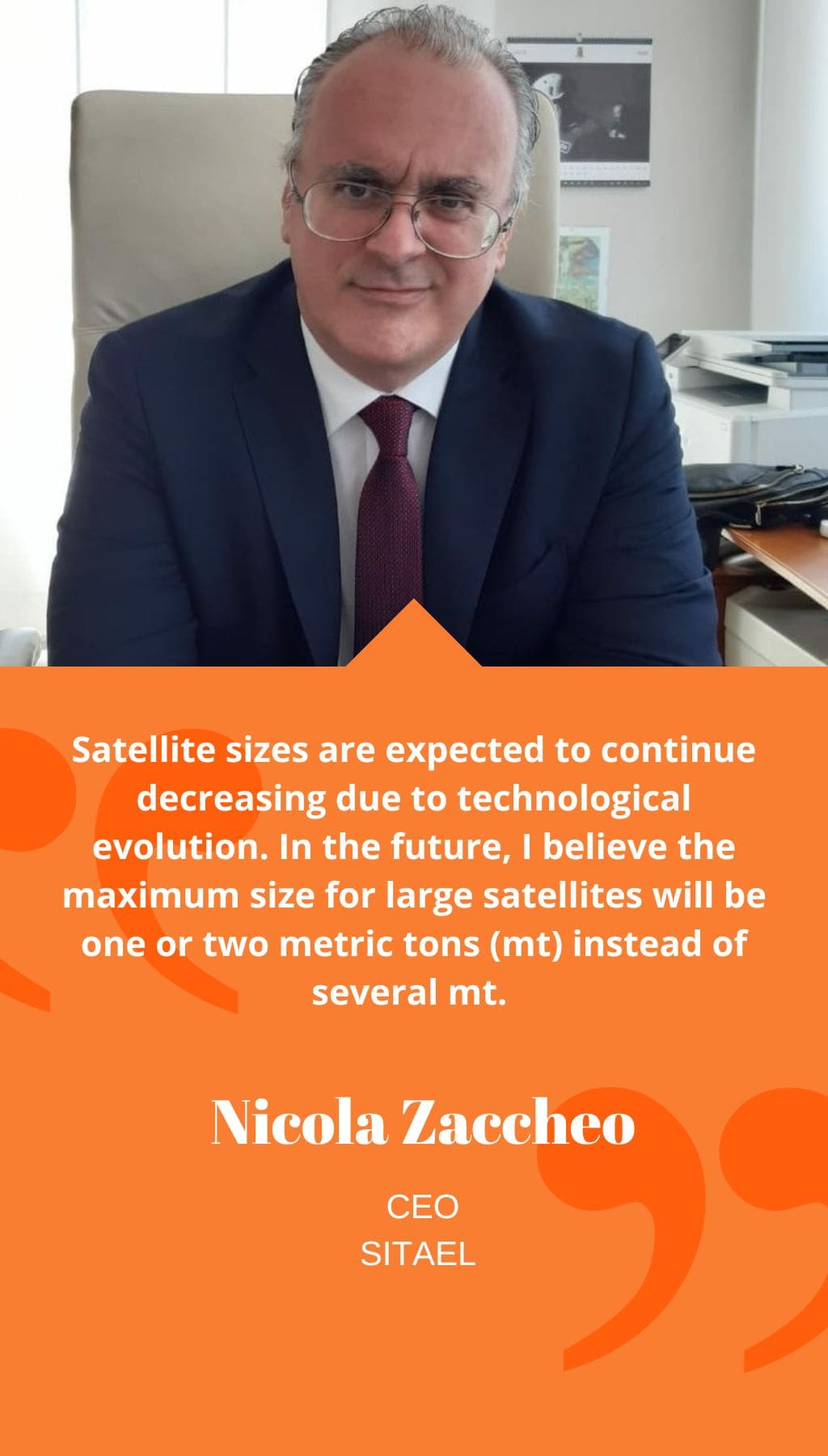
- Italy | 4 March 2018

Can you please provide a comprehensive overview of SITAEL’s history and operations?
SITAEL is a leading Italian privately-owned space company that has been operating for over 20 years. The company was formed through the merger of five main companies, and its involvement in space missions started approximately 16 years ago, while its propulsion activities have been around for 30 years. SITAEL has four main areas of expertise: space systems, advanced propulsion, avionics for platforms and payloads, and downstream services and applications. The company currently has over 350 employees operating in the aerospace industry, making it the largest Italian privately-owned space company. Additionally, SITAEL is currently in discussions with new stakeholders and is focusing its activities on the development of integrated solutions using data from several sources, including new and existing satellites, airborne, and in-situ sensors.
Do you believe electric propulsion will be the future of all satellites?
In my opinion, all innovative future satellites will have electric propulsion onboard. SITAEL’s low power electric propulsion systems are currently the best in the world in terms of performance and technological maturity level, making them attractive for constellations of small satellites. SITAEL is developing small satellites equipped with low power electric propulsion, which would be an evolution since these satellites can operate in very Low Earth Orbit with long mission lifetimes of several years, unlike other satellites that would just fall in a few weeks. Operating in very Low Earth Orbit allows for very high observation performances comparable to bigger satellites with huge cost savings. Furthermore, electric propulsion is also utilized to change the satellite orbit when needed and to de-orbit the satellite at the end of its life. SITAEL is also working with high power electric thrusters, which have several applications, such as transferring large telecom satellites in Geo Stationary Orbit from Low Earth Orbit, thus saving a lot of money in launch activities or moving spacecraft in deep space exploration.
Why are smaller satellites essential for the future?
Satellite sizes are expected to continue decreasing due to technological evolution. In the future, I believe the maximum size for large satellites will be one or two metric tons (mt) instead of several mt. Less weight means a lot of cost savings at launch and less problems managing their operations. A crucial role in the future will be played by a constellation of different small satellites, each with different payloads onboard, in order to provide diverse services, for instance in Earth monitoring or telecommunications, with the same constellation. It will also be very interesting to integrate data from a series of satellites in several different orbits.
Can you elaborate on SITAEL’s involvement in scientific missions and your future plans in this area?
SITAEL is involved in important scientific missions, not only for ESA but also for other important Space Agencies such as NASA and JAXA. The company develops systems for detectors and scientific payloads utilized in space scientific missions. SITAEL’s space activities were born thanks to international experiments for astroparticle physics research (PAMELA, AMS, INTEGRAL, GAIA, etc.). The company is the only Italian company involved in “Curiosity,” the NASA Mars rover, for which it developed the weather monitoring station.
With all of the space debris that we have in the atmosphere, what does the future of satellites look like?
For all satellites launched today, we must guarantee that they will still be orbiting in at least 25 years. However, we are thinking about reducing that standard to something like 15 to 20 years. Before these regulations, there was nothing. It is currently illegal to remove space debris that belongs to another country. We are trying to come up with international regulations to address this issue.














